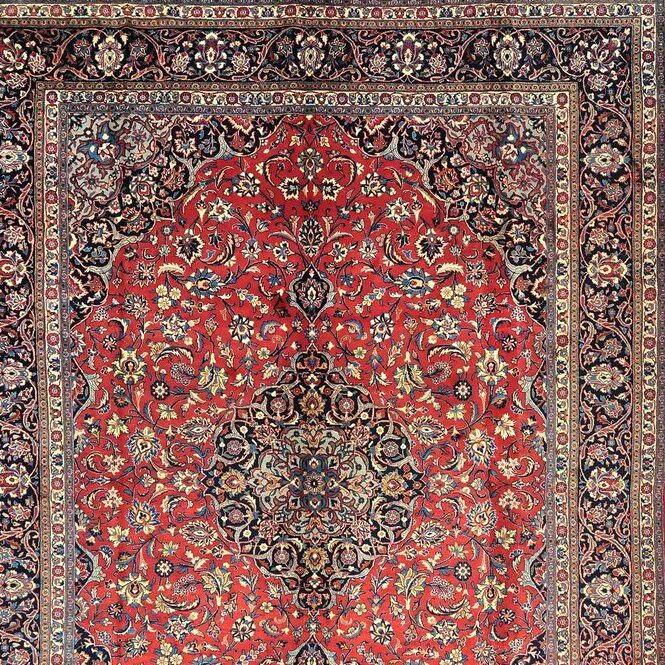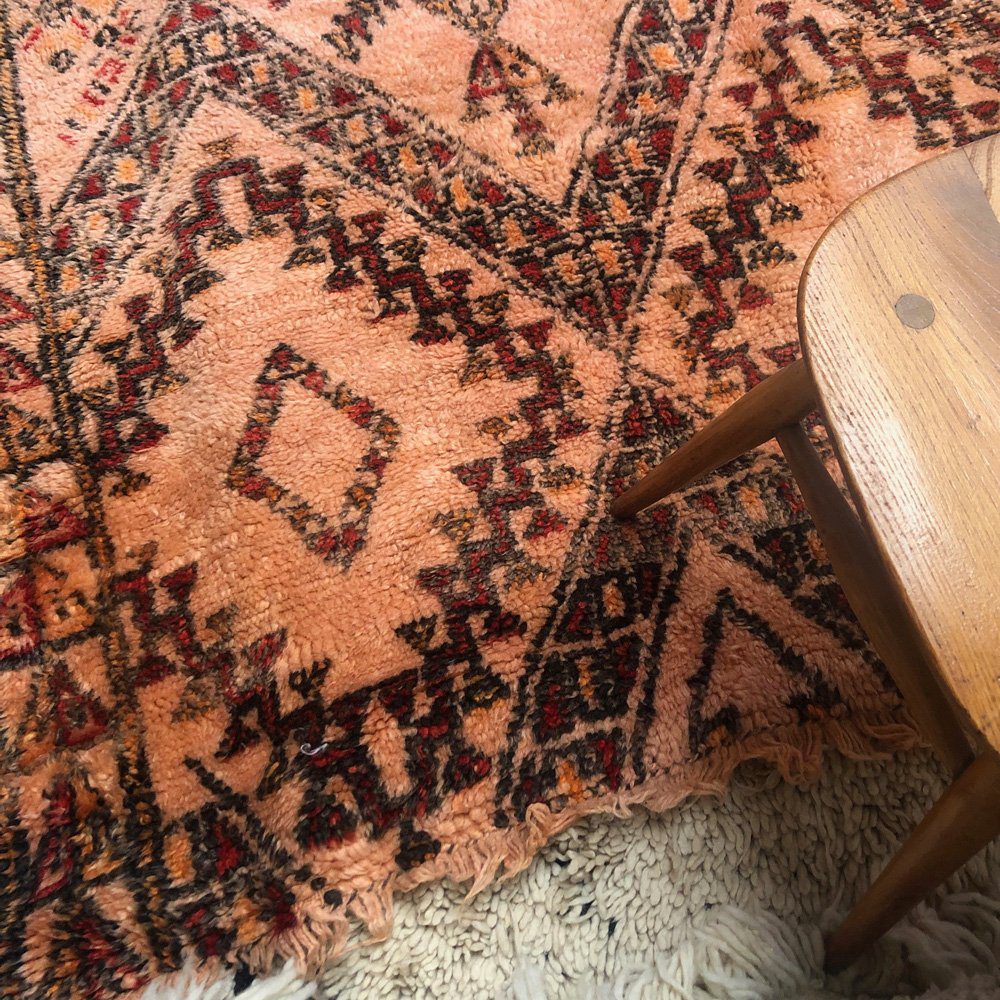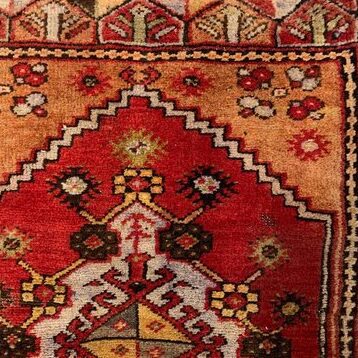Discover Algerian Rugs: Tradition Meets Artistry
The intricate process of creating an Algerian rug is a beautiful testament to the nation's rich cultural heritage. Each Algerian rug, from the traditional Algerian wool rugs to the more specialized Algerian Berber rugs, embodies a unique blend of artistry and craftsmanship passed down through generations. The process begins with the selection of materials.
Typically, high-quality wool is the cornerstone, known for its durability and texture. The wool is meticulously cleaned, spun, and dyed, often using traditional methods and natural dyes. The weaving process is equally intricate, involving skilled artisans who use time-honoured techniques to create the distinctive patterns and textures that are characteristic of Algerian rugs. This level of craftsmanship ensures that each rug is not only aesthetically pleasing but also durable and long-lasting.

Uniqueness and Design Aesthetics of Algerian Carpets
Algerian carpets are renowned for their unique designs, which reflect the rich cultural heritage of Algeria. These designs often incorporate traditional motifs and symbols, each with its own historical and cultural significance. The colours and patterns used in Algerian carpets are typically vibrant and bold, making them distinct in appearance. This uniqueness is a result of the skilled craftsmanship and the traditional techniques used in their creation, which have been passed down through generations. Algerian carpets
The Artistry of Algerian Rugs
Algerian rugs are a testament to the exquisite artistry that has been passed down through generations. These rugs are more than just floor coverings; they are intricate pieces of art that reflect the rich cultural heritage of Algeria. In this section, we will delve into the mesmerizing world of Algerian rug designs and the profound influence of Berber culture.
Traditional Algerian Rug Designs
Algerian rugs are renowned for their traditional designs, which have been cherished for centuries. These designs often feature a symphony of vibrant colours and intricate patterns that tell stories of the region's history and traditions. Here are some key aspects of traditional Algerian rug designs:
Bold Geometric Patterns
One of the defining features of Algerian rugs is their bold geometric patterns. These patterns are a visual feast, with shapes like diamonds, triangles, and squares seamlessly woven into the fabric. The geometric designs are not only aesthetically pleasing, but also carry cultural significance.
Nature-Inspired Motifs
Many traditional Algerian rug designs draw inspiration from nature. You'll often find motifs that depict elements from the natural world, such as flowers, animals, and landscapes. These motifs reflect the deep connection between Berber communities and their environment.
Symbols of Identity
Algerian rug designs often incorporate symbols that hold profound cultural meaning. These symbols can represent tribal affiliations, protection from evil, or blessings for the home. Each symbol tells a unique story, and deciphering them is like unlocking a hidden language.
Influence of Berber Culture
The Berber people have played a pivotal role in shaping the art of Algerian rug making. Berber culture, with its rich history and traditions, has left an indelible mark on the designs and techniques used in rug production. Here's how Berber culture influences Algerian rugs:
Heritage and Craftsmanship
Berber communities have a deep-rooted tradition of craftsmanship, and this tradition is evident in the making of Algerian rugs. The meticulous attention to detail, use of traditional techniques, and emphasis on quality are all traits inherited from the Berber heritage.
Symbolism and Spirituality
Berber culture places great importance on symbolism and spirituality. Many symbols and motifs in Algerian rugs have spiritual significance, offering blessings and protection to those who own them. Understanding these symbols adds layers of appreciation to these rugs.
Preserving Cultural Identity
Algerian rugs serve as a means of preserving cultural identity for Berber communities. Through the creation and sale of these rugs, Berber artisans not only sustain their way of life but also share their cultural heritage with the world.
As you explore the world of Algerian rugs, keep these traditional designs and Berber influences in mind. They are the threads that weave together the intricate tapestry of Algerian rug artistry.
Joe Rugs - Carpet Expert
Hello! I'm Joseph Rugs, the founder of CarpetJoe.com and your guide through the intricate world of carpets. Born and raised in London with a deep-rooted passion for art and culture, I've explored the globe to bring the rich tapestry of carpet weaving right to your screen. My academic background in arts and humanities from Oxford has fuelled my curiosity, leading me to uncover the stories behind every knot and weave. As a family man, my adventures are shared with my loved ones, enriching our lives with every piece of art we encounter. Join me as we explore the beauty and craftsmanship of carpets together.
Identifying Authentic Algerian Rugs
Identifying an authentic Algerian rug requires an understanding of the traditional techniques and materials used in their creation. Authentic Algerian rugs are typically handwoven using natural fibres, such as wool, and feature traditional patterns and motifs. The quality of the craftsmanship, the texture of the fibres, and the vibrancy of the colours are all indicators of authenticity.
Understanding these characteristics can help in distinguishing authentic Algerian rugs from imitations, ensuring that collectors and enthusiasts can appreciate the true value and beauty of these traditional works of art.
Common Types or Rugs
Each type of Oriental rug has its unique charm and story, making them more than just a luxury item; they are a piece of their country's cultural legacy. Collectors and enthusiasts of Oriental and Persian rugs appreciate them not only for their aesthetic appeal but also for their cultural, historical, and artistic significance.

Persian Rugs
Originating from what is now modern-day Iran, Persian rugs are celebrated for their unparalleled craftsmanship and enduring beauty.

Berber Rugs
Originating from the Berber tribes of North Africa, particularly Morocco, this type of carpet is renowned for its rugged texture and resilient nature.

Turkish Rugs
Turkish rugs have a legacy steeped in history and artistry, and have always been a symbol of exquisite craftsmanship and cultural significance.
Frequently Asked Questions
In the 1800s, the types of rugs varied greatly by region. In the Middle East and Central Asia, traditional Persian, Turkish, and Caucasian rugs were prevalent. These rugs featured intricate patterns and were hand-knotted using natural dyes. In Europe, Aubusson and Savonnerie rugs were popular, known for their floral motifs and pastel colors. Meanwhile, in America, hooked and braided rugs became common, reflecting more simplistic, utilitarian designs.
Algerian rugs are traditionally handcrafted by skilled artisans. The process involves sourcing natural materials like wool or camel hair, which are then spun into yarn. Artisans use natural dyes derived from plants and minerals to color the yarn. The weaving process is meticulous, often using a loom, and can take several weeks to months, depending on the rug's complexity. The designs are typically inspired by local traditions, cultural stories, and natural surroundings.
Common patterns in Algerian rugs include geometric shapes, tribal motifs, and symbolic figures. These may represent natural elements, like mountains and rivers, or cultural symbols, such as fertility and protection. The use of vibrant colors and intricate designs varies across different regions, reflecting the diverse cultural influences in Algeria.
To identify an authentic Algerian rug, look for handmade craftsmanship, quality of the material (typically wool), and the uniqueness of the design. Authentic rugs often have irregularities in their weave, showing they are handwoven. The natural dyes used should have a certain depth and variation in color. Provenance and a history of the rug can also indicate authenticity.
Algerian carpets have a rich history that dates back centuries, deeply intertwined with the country's cultural and social heritage. They were traditionally made by various tribes across the region, each bringing their unique styles and techniques. These carpets were not only functional items but also a form of artistic expression and a marker of cultural identity.
Algerian rugs come in various types, reflecting the diverse cultures and traditions of the region. These include Berber rugs with their distinct geometric patterns, Tlemcen rugs known for their floral motifs, and Sahara rugs featuring more simplistic, abstract designs. Each type has its unique characteristics and weaving techniques.
Berber rugs originate from the Berber regions of North Africa, predominantly from Morocco, Algeria, and Tunisia. They are named after the Berber tribes who have been crafting these rugs for centuries. Known for their distinctive patterns and natural dyes, Berber rugs are a significant part of North African culture.
A Berber wool rug is a type of rug traditionally made by the Berber tribes of North Africa. These rugs are known for their thick pile, woven from natural sheep wool. They often feature characteristic looped designs and natural, undyed wool, giving them a unique, rustic appearance. Berber wool rugs are prized for their durability, warmth, and distinctive cultural designs.

